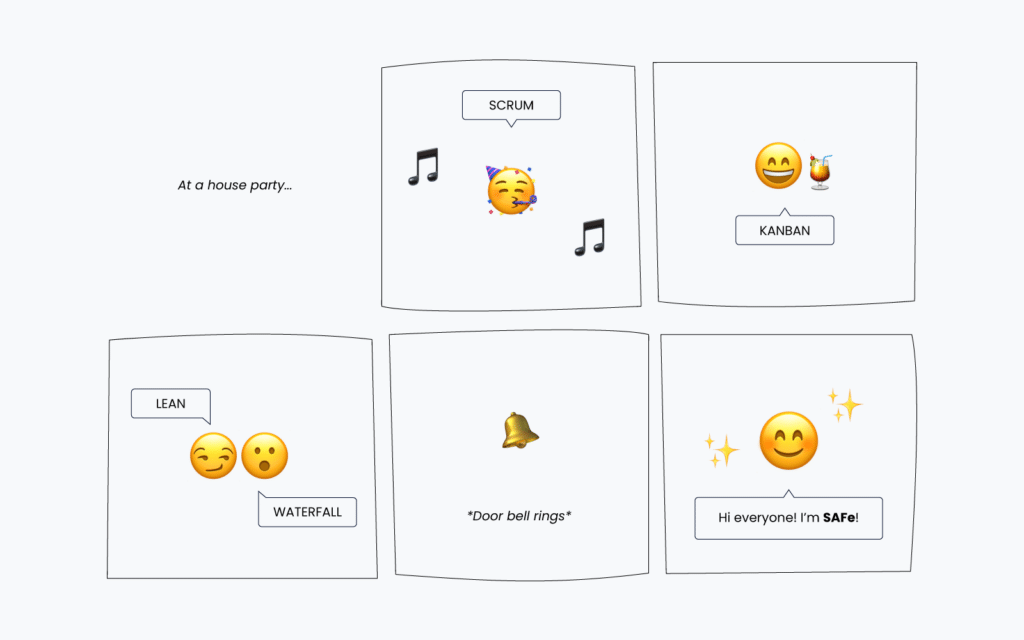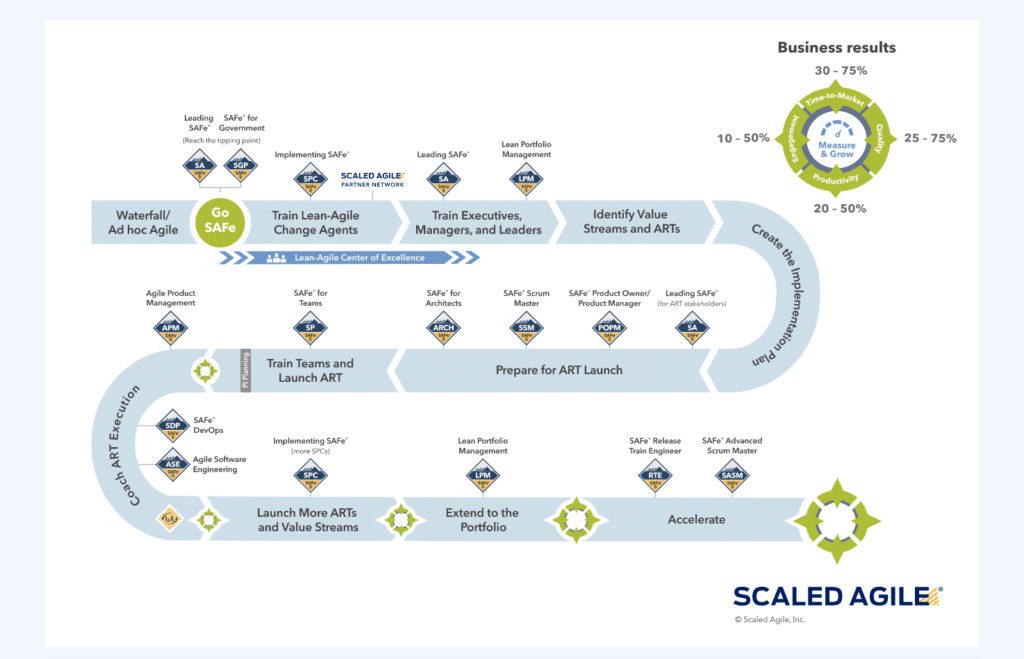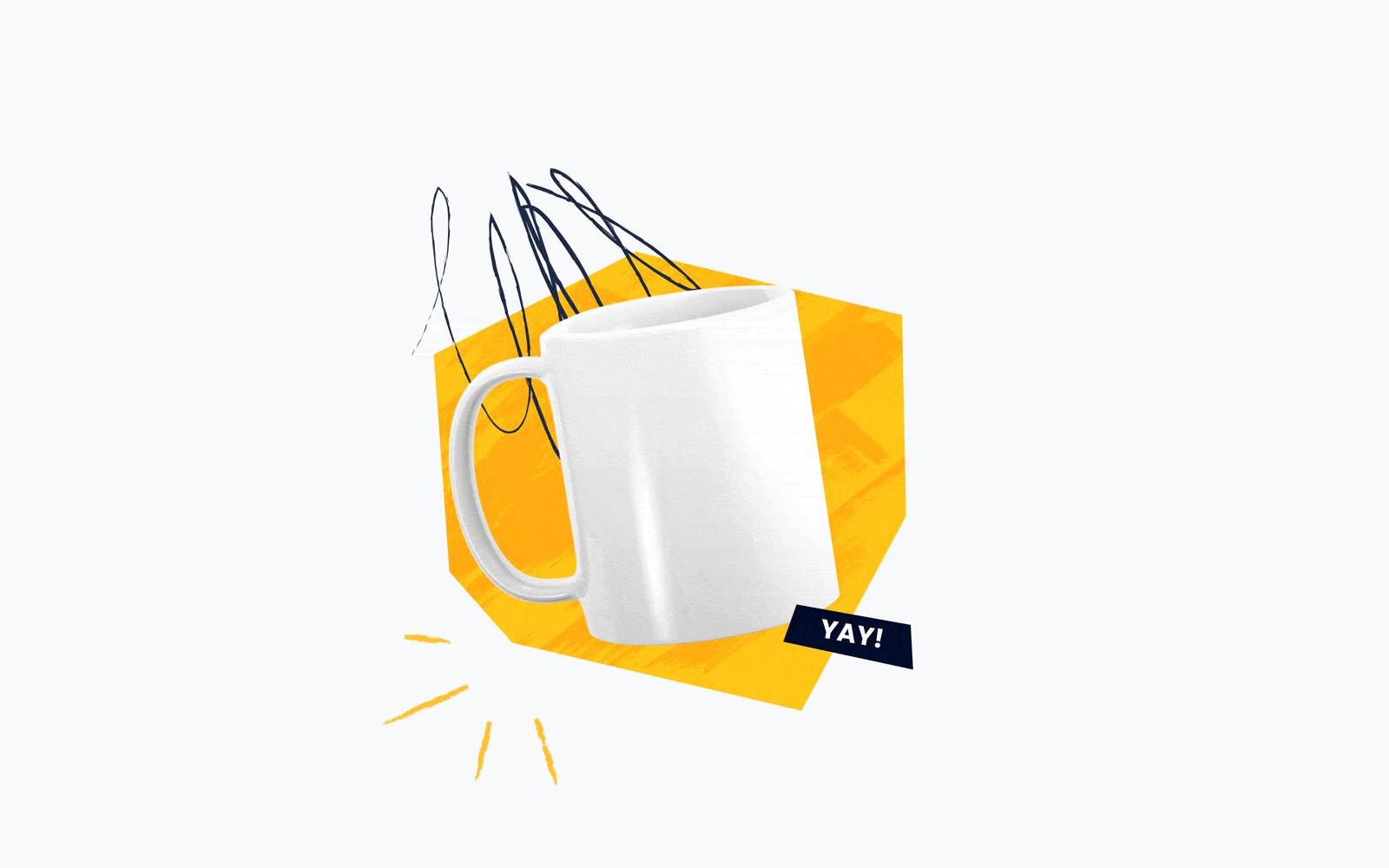Scrum, Kanban, Lean…and now SAFe®. As a project manager, I’ve worked in large and small organizations from global enterprises to start-ups, and have used agile, Scrum and all kinds of other project methodologies. I've learned that when an organization grows and more teams need to be added or better aligned to deliver products and services, SAFe becomes the star of the party.

What Is The Scaled Agile Framework®?
According to Scaled Agile, “The Scaled Agile Framework® (SAFe) is a system for implementing Agile, Lean, and DevOps practices at scale”. As it implies, it is a framework that can be used to help organizations adapt their agile processes and workflows as an organization grows.
It can be used by organizations that are using agile frameworks such as Scrum or Lean, or for organizations that are looking for a way to scale their DevOps processes to support the organization. SAFe can help businesses align development teams and project teams to better deliver value to customers.
Why is SAFe® Useful?
SAFe offers organizations a guideline (or roadmap) to help them on their journey to grow. It introduces the framework at a lower team level right up to the higher management, or the portfolio level or program level.
Along with the roadmap, there is dedicated training that organizations can take. SAFe offers a deep knowledge base for dedicated agile roles such as Scrum Master, Product Owners, Architects, and the agile team as a whole.

Is SAFe® A Methodology or Framework?
As it is indicated in its very name, SAFe is a highly adaptable framework. As it is being widely used by at least 1,000,000 practitioners and 20,000 enterprises globally, SAFe would most likely not have as much mass appeal and global adoption if it were a rigid methodology.
That said, this is a very common question as in common everyday usage, methodology and framework are often used interchangeably. So, in support of my answer to this question, it's helpful to keep Michael Wood's words in mind from his article on methodology vs framework:
In general, frameworks create a structure of what to do but rely on the doer to determine the best way to get the “what” done, whereas a methodology spells it all out in finite detail: what to do, when to do, how to do it and why.
Michael Wood
SAFe® Principles
As SAFe provides organizations with a way to scale agile as their organizations grow, its foundations align with agile, lean product development, and systems thinking to provide guidance not just for an agile team, but for ‘teams of teams’.
There are 10 lean-agile principles upon which the framework is based on:
- Take an economic view: Focuses on the concept of delivering value to customers early and often. Taking an economic view also highlights the need to consider all costs (risk, manufacturing, operational, development) and operation within approved budgetary guardrails
- Apply systems thinking: Requires an understanding of systems in which the org creating the solution is a system, and that the solution is also a system (the project, product)
- Assume variability; preserve options: Centers around the concept of not deciding on a single design/set of requirements early in development, but rather having a set of designs/requirements and using actual data (from experiments/testing) to narrow the options
- Build incrementally with fast, integrated learning cycles: Follows the concept of delivering work in smaller (more frequent) chunks and building on top of the previous work
- Base milestones on objective evaluation or working systems: Evaluate work in development at various times throughout the agile development lifecycle to evaluate if whatever is being developed will provide economic benefit and will be fit-for-use
- Visualize and limit work in progress (WIP), reduce batch sizes, and manage queue length: As implied, this principle focuses on providing a limit to the work people or teams have assigned at a given time (to not overwhelm and ensure that there is a consistent flow to work and delivery)
- Apply cadence; synchronize with cross-domain planning: Following a pattern of alignment with others for planning across teams
- Unlock the intrinsic motivation of knowledge workers: Understand the need to provide autonomy, clear constraints, and obstacles, and creating a culture of engagement for your team members
- Decentralize decision making: To act fast and deliver more frequently requires decisions to be decentralized and allowing those closest to make decisions
- Organize around value: Instead of organizing teams around specific functions (example: design, testing, etc), organize around cross-functional teams and customer and business value.
How To Implement The Scaled Agile Framework®
Step 1: Having The Right Mindset
To start implementing SAFe, an organization must have a desire to improve its business agility and a willingness to adopt a Lean-Agile mindset.
Lean-Agile combines beliefs, principles, and actions from the Agile Manifesto and Lean thinking. It is the transformation from a fixed mindset to a growth mindset where professionals are ready to experiment, be inspired by others, explore opportunities, be challenged, and embrace failures.
The goal of Lean is to deliver maximum value to clients in minimum time while providing the highest possible quality. Lean thinking can be defined as:
- Specifying the value of the product
- Defining a value stream for each product
- Creating value flow without interruption
- Allowing the customer pull value
- Pursuing perfection
Step 2: Defining A Value Stream
A value stream is a series of steps (and organizational components) that are required to deliver value to a customer—from the initial trigger to receiving the final product or service. It's incredibly important when implementing SAFe.
SAFe focuses on optimizing the value stream to deliver a continuous flow of value by organizing people around value streams so that people and teams work seamlessly together rather than siloes or segments.
For example, if a business creates custom ceramic coffee mugs for sale on their website, a value stream may look like this:


In the example above, all processes that are required to deliver value from the moment the customer places their order for their coffee mug to when they receive their shipment is organized to ensure that value flows.
Step 3: Setting Up The Agile Release Train (ART)
An Agile Release Train (ART) is a combination of multiple agile teams. They are built around a value stream and are expected to continuously deliver value by building solutions that benefit end-users and the customer.
SAFe revolves around the coordination of multiple agile teams, and an ART comprises all the people that are required to develop, test and deploy the product or service. It typically has 50–125 people in it or 10–12 different agile teams (with a team size of 8 to 10 people).
An ART is cross-functional and contains all people and resources required to develop, build, and deliver a full set of products or services to a customer. Depending on the size of an organization, there can be multiple ARTs (think large-scale organizations with 500+ people).
Step 4: Defining Various Roles In SAFe®
Like any organizational structure, certain roles are required and should be assigned. In SAFe, at the individual agile team level, the roles are similar to those in a small agile team but with a few more roles and stakeholders:
- Scrum Master: facilitates agile ceremonies and clears any impediments
- Product Owner: owns the product backlog and prioritizes items in it
- Scrum Team Members: complete prioritized backlog items and deliverables to develop value for customers
- Release Train Engineer (RTE): In SAFe ART, this is the program manager and coordinator for the agile teams
- System Architects/Engineers: For both technical and non-technical organizations, systems architects and engineers help product or software development by providing a solid architectural basis for the solution
Step 5: Preparing a Program Backlog for the Agile Release Train
You have set up your ART and now have multiple agile teams. To help coordinate what gets developed or built, create a program backlog.
A program backlog will contain the features, epics, user stories, functionality, and architecture (systems) work that is required to support the value stream and provide value to customers.
Having a common backlog will require the input of many ART roles such as the Release Train Engineer, Product Owners, and others such as product management and the organization’s leaders. A product backlog will also help in the next implementation step of defining who works on what and when.
Step 6: Program Increment (PI) Planning and ART Syncs
In the last step, you need to plan who does the work and when. In SAFe, this event is called Program Increment (PI) Planning. Central to SAFe, it's done on a regular basis and is an opportunity for alignment with the entire ART.
A PI can be any length of time an organization desires, but it typically takes 3 months (12 weeks). This allows for 6 2-week sprints that teams need to plan for. This is typically done with the entire ART present (yes, all agile teams).
Due to the scope, PI planning is usually a two-day event that includes:
- A presentation of the business context, strategic goals, and mission
- Breakout planning sessions for the agile teams where they create their plan with items in their team backlog from the common program backlog
- Presentation of draft plans by all agile teams
- Management review and problem-solving discussions
- Team breakouts for planning adjustments and finalization of their plan
- Presentation of final plans and confidence vote
- Review of program risks and plan rework (if required)
After PI planning is completed, coordination and collaboration is ongoing. Frequently throughout the PI, representatives of the agile teams (the PO and Scrum Master) along with the RTE will meet for an ART sync to review the progress of the agile teams and identify any dependencies, issues or blockers that require coordination. This can happen at any interval during a PI, but every 2 weeks (or at the end of each sprint or iteration) is a good cadence.
What Are The Tools Used In SAFe®?
As SAFe leverages other agile methodologies like Scrum and Kanban, there are a number of tools that can be used to help agile teams working with SAFe.
For some recommended tools that can be used for SAFe, start with our lists of Agile Tools and Agile Project Management Software.
As PI Planning is recommended to be an onsite (face-to-face) activity, the following tools are also recommended:
- Large event space where the entire ART can gather and work in teams
- Whiteboards or large flip-chart papers
- Whiteboard markers
- Post-It/Sticky Notes (used to represent items from their team backlog)
- Snacks & refreshments (because who doesn’t love snacks 😊)
SAFe® & Other Agile Methodologies
I hope you enjoyed the agile party and meeting our new party guest SAFe. As you may have noticed, SAFe actually has a lot in common with some of the other guests such as Scrum and Lean. It's the start of a great relationship!
Likewise, if your organization is growing and managing multiple agile teams is becoming complicated, you may want to consider inviting SAFe to your party. If you have questions, feel free to connect with me via LinkedIn or Twitter.
For other hybrid project management methodologies and tools, subscribe to The Digital Project Manager newsletter. Want more? View our membership!
®SAFe and Scaled Agile Framework are registered trademarks of Scaled Agile, Inc.


